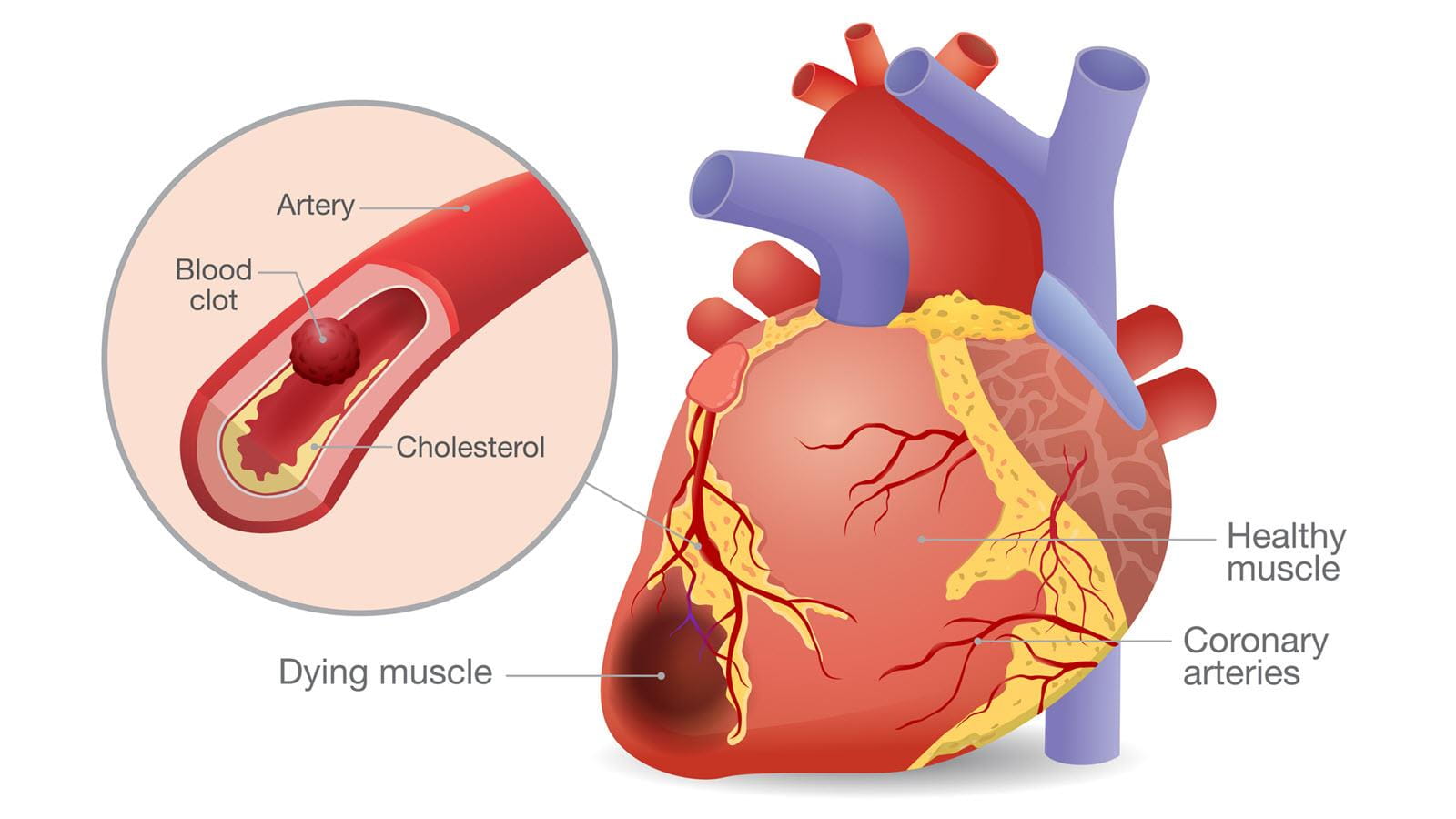Just about everyone knows the classic symptoms of a heart attack: a pain in the chest that can radiate down your arms or up into your neck, accompanied by shortness of breath and sometimes a feeling of impending doom. Other symptoms, particularly for women, can include nausea, tiredness and vomiting.
But what’s happening on the inside during a heart attack? The medical name for a heart attack – myocardial infarction (MI) – begins to explain. Myocardial infarction means the death of tissues of the myocardium, or heart muscle, due to constricted blood flow. The heart muscle needs the oxygen that our blood delivers to keep functioning. A heart attack, at its simplest, is a lack of oxygen.
Here’s what typically happens:
- Something – often a ruptured cholesterol plaque followed by a blood clot – narrows and then blocks blood flow in an artery.
- The blockage deprives the heart of oxygen-rich blood.
- Without blood and oxygen, the heart muscle begins to die.
- This can cause an electrical malfunction such that the heart stops pumping sending the patient into cardiac arrest.
Time is critical when someone is having a heart attack. If the person is still talking and breathing, get them to the hospital fast. If the person is unconscious or not breathing normally, call an ambulance, start CPR, and if someone else is with you, look for an automated external defibrillator (AED).
Heart attack treatment at the ER
When a patient with a suspected heart attack arrives at a hospital, doctors will typically use an EKG monitor to check the electrical activity of the heart. Doctors will also test blood for troponin, proteins that the heart muscle releases when it’s damaged, which can confirm a heart attack diagnosis.
From there, doctors have a number of options, including medications, procedures like balloon angioplasty, stents and more. A quick transport to the emergency room gives a patient the best chance of a good outcome. Some patients regain nearly all of their cardiac function after having a heart attack.
But someone who survives a heart attack also enters a dangerous period. Research shows that for the next 90 days, they are at increased risk of another cardiac event. CSL Behring is investigating a potential treatment to help protect the patient from a second heart attack or subsequent cardiac problem.
Despite great strides in cardiac medicine, some experts fear that rapid progress has now stalled. Heart disease ranks as the top cause of death in the United States, and someone has a heart attack, on average, every 40 seconds. Heart disease kills 697,000 people across the U.S. according to the Centers for Disease Control and Prevention, and heart attack rates are high for nearly every demographic. Cardiovascular disease also remains the world’s No. 1 cause of death. The enormity of the need motivates researchers, said Bronwyn Kingwell, CSL’s Executive Director, Research Portfolio Strategy & Management, Research Therapeutic Area Lead (Cardiovascular & Metabolic).
“Reducing the global burden of heart disease inspires my teammates both in academia and inside the walls of CSL Behring,” Kingwell wrote in an article. “If successful, the next era of cardiovascular therapy may include innovative approaches that boost cholesterol efflux levels and translate into meaningful reductions in cardiovascular events.”



